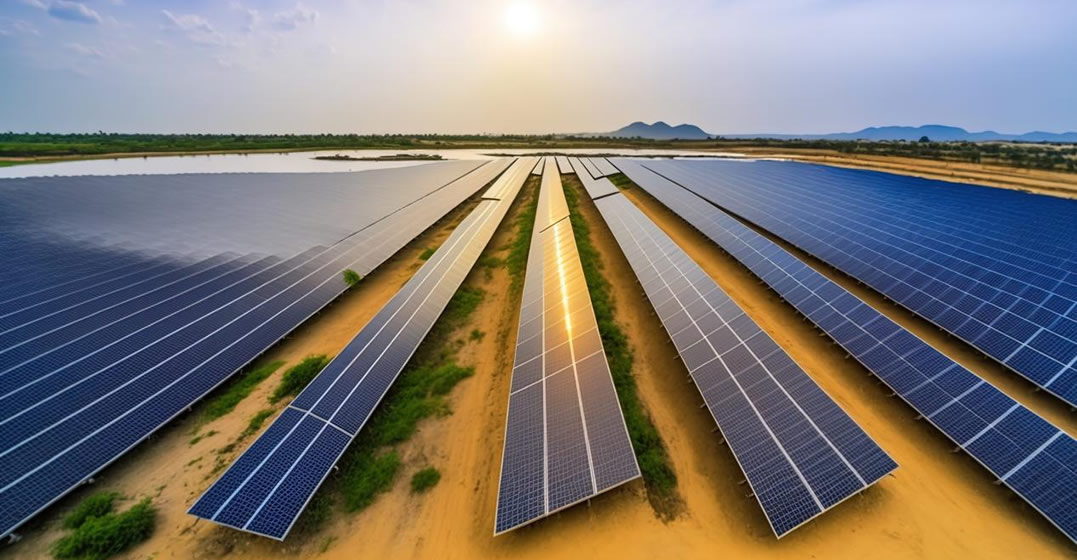
Introduction
Photovoltaic industry is the use of solar energy to convert light energy into electricity technology and industry. It can convert the sun's light energy into electricity for home, industry, business and other fields. The photovoltaic industry is an environmentally friendly, renewable energy industry that is very important for reducing dependence on fossil fuels and reducing carbon emissions, while also providing green energy solutions for economic development.
Upstream: is the basis of the photovoltaic industry, including the production of solar silicon materials and the processing of silicon wafers. In the manufacturing process of solar cells, polysilicon or monocrystalline silicon materials need to be used as the main raw materials, and the upstream link is responsible for extracting pure silicon from silicon ore and processing it into silicon wafers, providing the key material basis for the manufacturing of photovoltaic modules in the midstream link.
Midstream: is the core part of the photovoltaic industry, mainly involved in the manufacturing of photovoltaic modules. In this stage, silicon wafers are assembled, packaged and packaged into solar modules, also known as photovoltaic modules or solar panels. The midstream process includes cell assembly, packaging, backplane curing and connection box installation steps to ensure that the solar cell can efficiently convert light energy into electricity. Grinding wheel dicing saw is one of its important processing equipment.
Downstream: It is the end of the photovoltaic industry chain, involving the construction of solar power stations and the sale of photovoltaic power. In this segment, photovoltaic modules are installed in solar photovoltaic plants to convert solar energy into electricity and inject it into the grid, providing green energy solutions for household, industrial and commercial electricity.
Second, the application of dicing saw in the photovoltaic industry
In the overall solution of the photovoltaic industry, the grinding wheel blade is usually used as one of the key equipment on the production line, and is used in conjunction with other equipment such as cleaning machines, diffusion furnaces, printing presses, etc., to complete the production of photovoltaic modules. Specifically, the main roles of the grinding wheel blade in the production process of photovoltaic modules include:
Silicon chip dicing: The standard cell is divided and cut into small rectangular pieces of different specifications to meet the power demand.
Wafer slotting: The silicon wafer is slotted to facilitate subsequent processes such as series welding and packaging.
Wafer quality inspection: Through the quality of the silicon wafer after dicing, the quality of the raw material and the stability of the production process can be indirectly judged.
Third, the solution
(1) Equipment selection
1, according to the production needs of the photovoltaic industry, choose a blade dicing saw with high precision, high efficiency and high stability.
2, the preferred choice of advanced control system and intelligent functions of the blade dicing saw to improve production efficiency and product quality.
(2) Blade optimization
1, the selection of high hardness, high wear resistance of the blade material, to ensure the stability and durability of the dicing process.
2, according to the material and thickness of the silicon wafer, choose the appropriate blade type and dicing parameters to achieve the best dicing effect.
(3) dicing process optimization
Optimize dicing parameters, such as dicing speed, feed rate, coolant flow rate, etc., to improve dicing accuracy and reduce heat damage.
(4) Intelligent upgrading
1, the introduction of Internet of Things technology to achieve remote monitoring and fault diagnosis of blade dicing saw, improve equipment maintenance efficiency.
2, the use of big data and artificial intelligence technology, intelligent analysis and optimization of the dicing process, improve production efficiency and product quality.
(5) Safety and environmental protection measures
Strengthen the safety protection measures of equipment to ensure the safety of operators.
Iv. Implementation steps
(1) Demand analysis: in-depth communication with customers to understand their specific needs and dicing requirements.
(2) Program design: According to customer needs, develop detailed dicing solutions, including equipment selection, dicing process, intelligent management system, etc.
(3) Equipment supply: Provide high-precision dicing saw equipment, and customize according to customer needs.
(4) Installation and commissioning: responsible for the installation and commissioning of equipment to ensure the normal operation of equipment.
(5) Operation training: to provide customers with equipment operation training to ensure that customers can master the use of equipment.
(6) Late service: Provide long-term maintenance and technical support services to ensure the smooth progress of customer production.